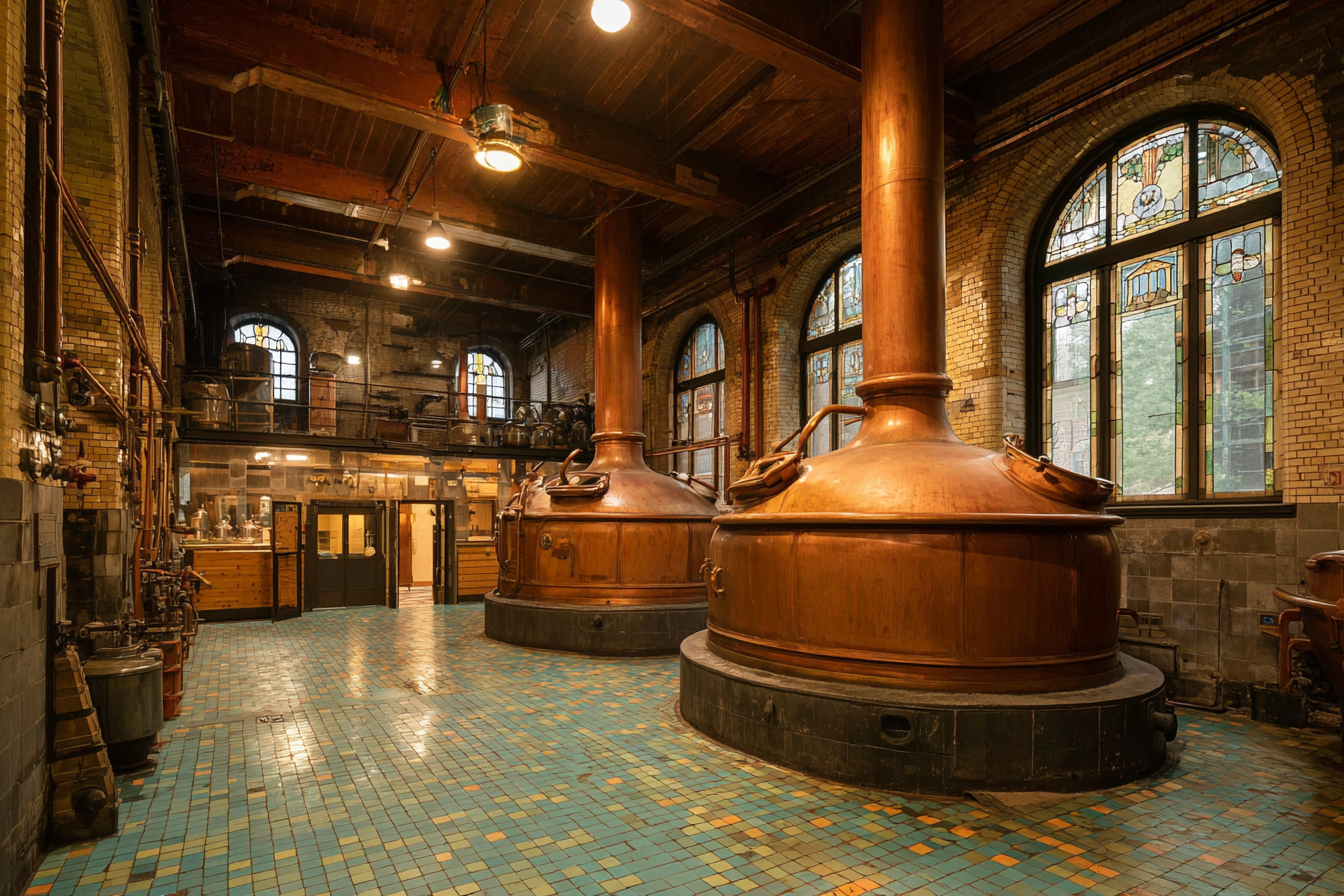The Czech Pilsner is more than just a beer style; it is a symbol of brewing innovation and cultural identity that has left an enduring mark on the world of beer. Born in the heart of Bohemia, in the city of Plzen, this golden lager revolutionized brewing when it first appeared in the 19th century. Over time, Czech Pilsner captivated drinkers far beyond Czech borders, inspiring countless brewers and evolving into a globally recognized classic. Let’s delve into the fascinating history of Czech Pilsner, exploring its origins, its pioneers, and how it continues to shape the beer landscape today.
Origins of Czech Pilsner in Plzen
The story of Czech Pilsner begins in the mid-19th century in Plzen (or Pilsen), a city in the western part of what is now the Czech Republic. During this period, brewing traditions in Bohemia mainly consisted of dark, heavy beers typical of the region. However, the local council and brewers wanted to create a new style of beer that would appeal to a wider audience — one that was clear, refreshing, and of consistent quality.
In response, the Plzen brewery was established in 1842 under the name Bürgerbrauerei (Citizens’ Brewery). Their goal was ambitious: to create a pale lager that combined the finest ingredients of local Bohemian malt and Saaz hops with a refined brewing process. The result would be a beer that was distinctively different from the typical dark ales and lagers of the time.
Role of Josef Groll and the Invention of the Style
The man who made Czech Pilsner a reality was Josef Groll, a Bavarian brewer who joined the Plzen brewery in 1842. Bringing his expertise from the Bavarian brewing traditions, Groll crafted the first batch of what would become the iconic Pilsner lager on October 5, 1842. His method combined bottom-fermentation techniques with the use of pale malt, soft water, and the noble Saaz hops, producing a beer that was brilliantly golden, crisp, and refreshingly bitter.
This new style was groundbreaking for several reasons:
- Clarity: Unlike the cloudy and darker beers common at the time, Groll’s Pilsner was clear and golden, achieved through precise brewing and filtration.
- Taste: The balanced bitterness from Saaz hops and the smooth maltiness created a refreshing flavor that appealed to many palates.
- Drinkability: It was lighter than traditional beers but still full-flavored, perfectly suited to the growing demand for sessionable lagers.
The success of Groll’s Pilsner was immediate. It quickly gained popularity not only in Bohemia but also throughout the Austro-Hungarian Empire and beyond.
Growth and Global Spread in the 20th Century
Following its debut in the 19th century, Czech Pilsner saw tremendous growth during the 20th century. With improvements in refrigeration, bottling, and transportation, the beer could now reach international markets more efficiently. This led to its recognition and adoption worldwide.
Notably, Czech Pilsner became the benchmark for pale lagers internationally. Many breweries in Europe and North America sought to emulate the style, often adapting it to local tastes. The industrialization of beer production helped boost its appeal as mass-market consumers favored its clean, approachable character.
During this period, the iconic Pilsner Urquell brand emerged as the flagship product representing the style. Its global exports introduced millions of consumers to Czech Pilsner, embedding it in beer culture across continents.
Impact on Beer Styles Worldwide
The influence of Czech Pilsner extends far beyond its original borders. It laid the foundation for what became known as “pilsner” or “pils” beers globally, a vast category within pale lagers. Here are some of the key ways it shaped beer styles worldwide:
- Creation of the Pilsner Category: Prior to Czech Pilsner, pale lagers were relatively rare. Its success inspired breweries everywhere to produce their own versions.
- Standard for Quality and Flavor: The use of noble hops, pale malt, and bottom fermentation became the gold standard for craft and industrial brewers alike.
- Influence on Other Styles: Beyond just pilsners, many lager styles borrowed techniques and ingredients from the Czech method, including Dry Lagers, Helles, and even some IPAs that employ Saaz hops.
- Cultural Impact: Czech Pilsner’s story has contributed to a broader appreciation of regional beer traditions and helped elevate Czech beer as a global icon.
Preservation of Traditional Brewing Etiquette
Despite its modern-day global fame, Czech Pilsner remains deeply tied to tradition and craftsmanship, particularly in its homeland. Brewers in the Czech Republic continue to adhere to time-honored methods and use authentic ingredients to ensure the beer’s unique character is preserved.
This dedication includes:
- Use of Saaz Hops: The distinct aroma and bitterness of Saaz hops are central to Czech Pilsner and are carefully sourced from the Czech hop-growing regions.
- Soft Water: The naturally soft water of the Plzen region plays a crucial role in the beer’s taste and mouthfeel.
- Bottom-Fermentation: Slow, temperature-controlled fermentation helps develop the beer’s crisp and clean profile.
- Open Lagering: Many traditional breweries still use open fermentation or extended lagering periods to enhance flavor complexity.
- Respect for Serving Etiquette: Traditionally, Czech Pilsners are poured to maximize head retention and served in distinctive glassware to highlight appearance and aroma.
Modern-day Czech Pilsners
Today, Czech Pilsner continues to thrive both within the Czech Republic and internationally. While flagship brands like Pilsner Urquell maintain the classic style, a growing number of craft breweries across the world are experimenting with it, putting their own spin on this historic beer.
Some modern trends in Czech Pilsner brewing include:
- Craft Innovations: Craft brewers are exploring varied malt profiles, different hop balances, and occasionally higher alcohol versions while staying true to the core characteristics.
- Sustainability: Traditional breweries increasingly prioritize environmental sustainability in ingredient sourcing and production.
- Global Appreciation: Beer festivals, competitions, and enthusiast communities celebrate Czech Pilsners as a style that embodies brewing excellence.
Despite innovation, the heart of Czech Pilsner remains the same: a perfectly balanced pale lager, crafted with respect for its origins and dedication to quality.
Lasting Legacy of Czech Pilsner
The history of Czech Pilsner is a testament to how innovation rooted in tradition can create something timeless. What started as a local experiment in Plzen has evolved into a worldwide phenomenon that continues influencing brewers and delighting drinkers more than 180 years later.
By combining carefully selected ingredients, pioneering brewing techniques, and a refined flavor profile, Czech Pilsner set the global standard for pale lagers. Its legacy is evident not only in the countless beers it inspired but also in the pride and cultural significance it holds in Czech society.
Whether enjoyed in a bustling Prague pub or at a craft beer bar thousands of miles away, the distinctive taste and story of Czech Pilsner remind us of the rich heritage of brewing and the enduring power of a truly great beer.







